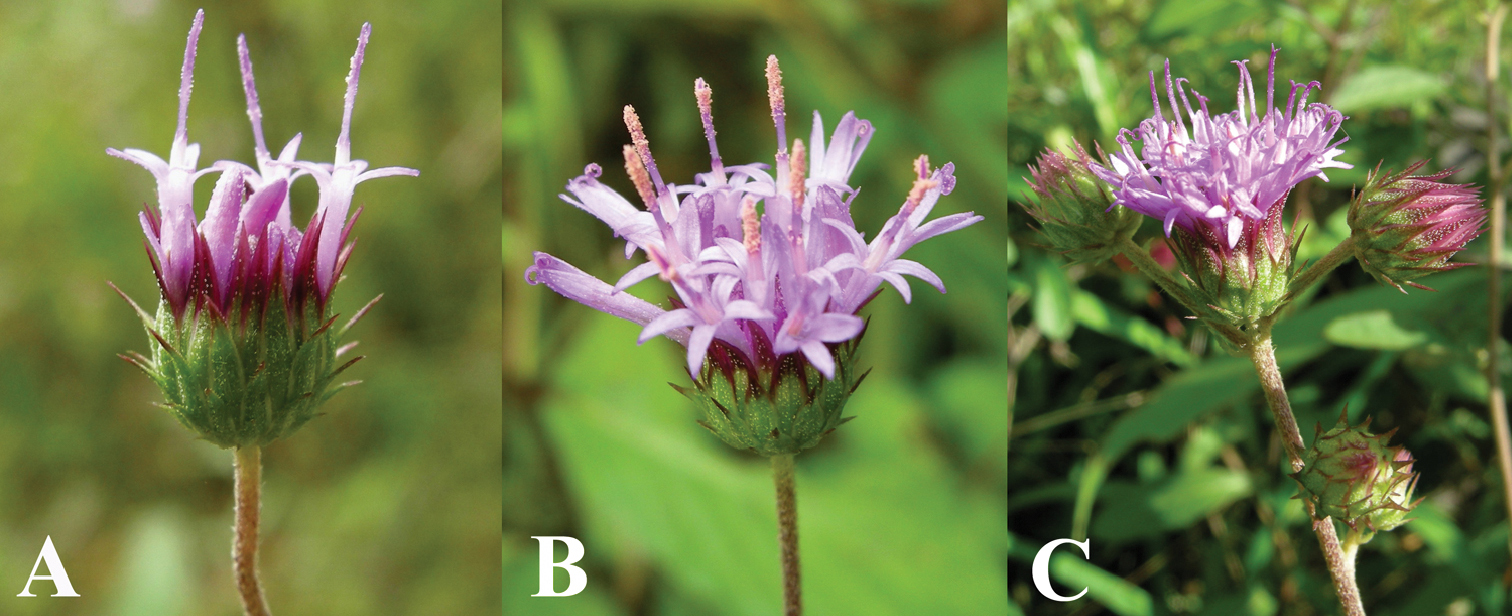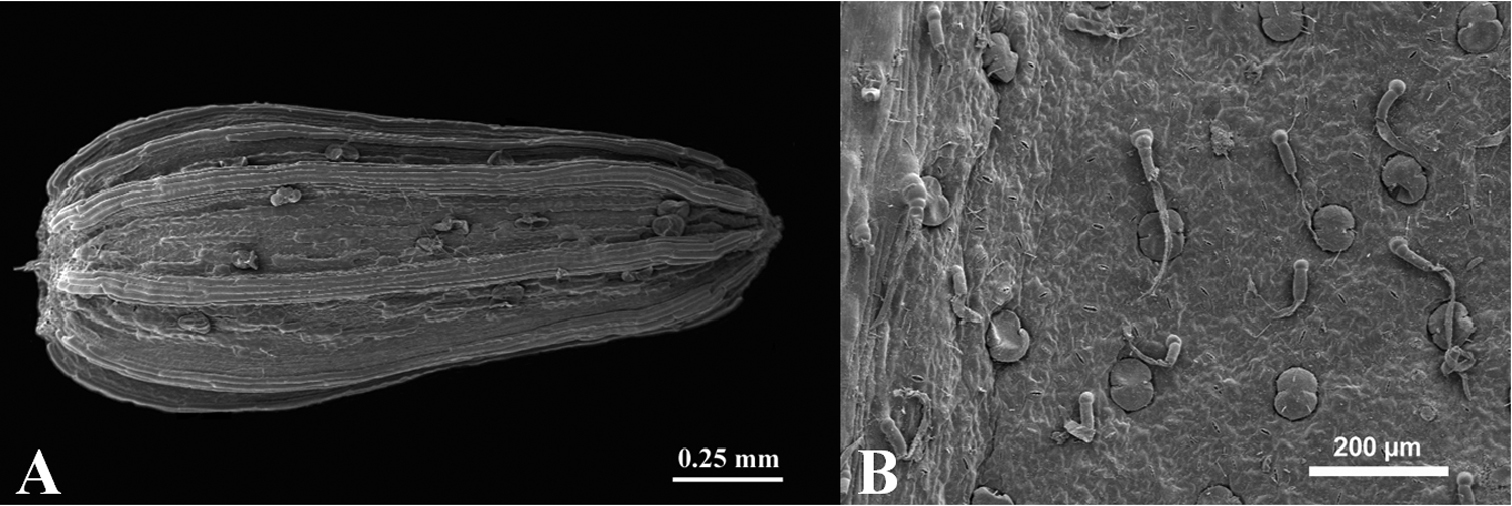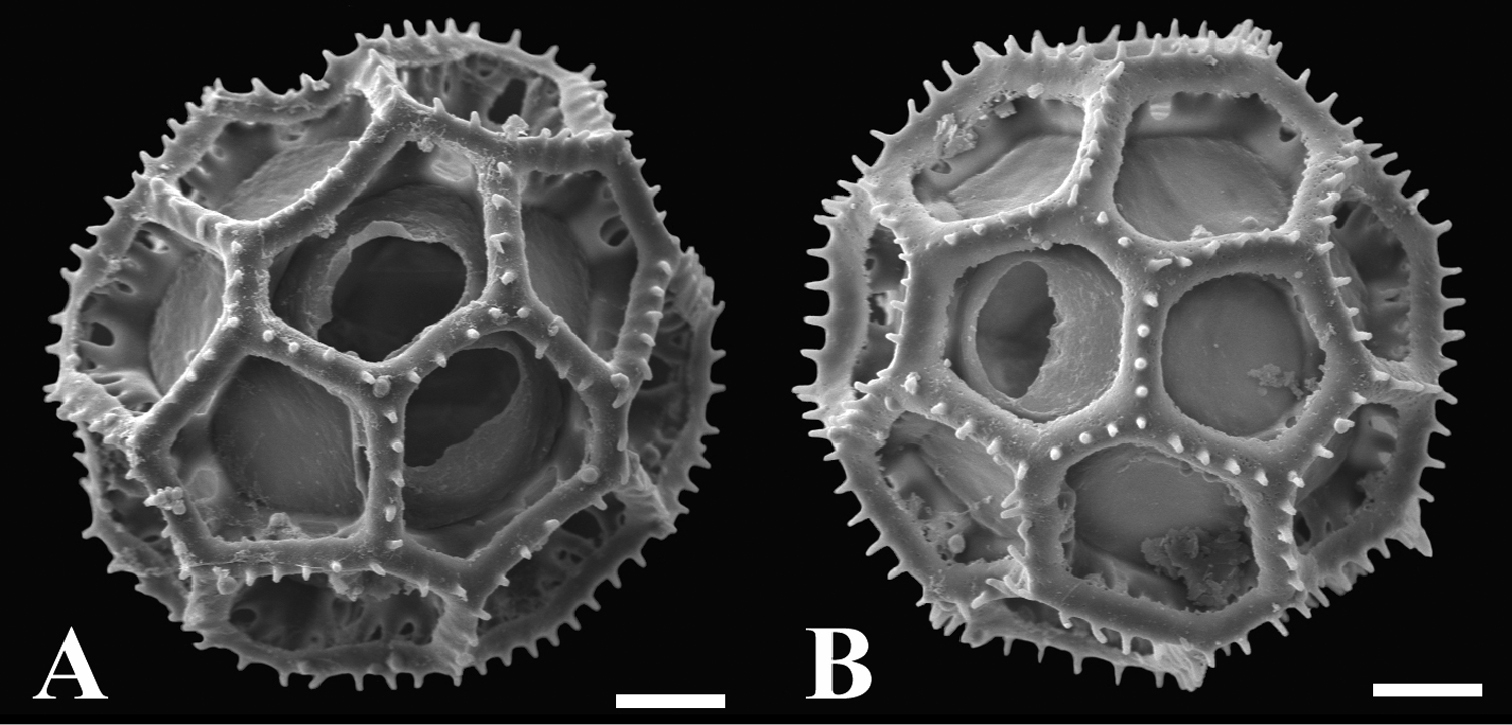






(C) 2012 Sukhonthip Bunwong. This is an open access article distributed under the terms of the Creative Commons Attribution License 3.0 (CC-BY), which permits unrestricted use, distribution, and reproduction in any medium, provided the original author and source are credited.
For reference, use of the paginated PDF or printed version of this article is recommended.
Camchaya thailandica Bunwong, Chantar. & S.C.Keeley, sp. nov. from Phu Phrabat Historical Park, Udon Thani, Thailandis described as a new species. Plant of this new species are similar to Camchaya gracilis (Gagnep.) Bunwong & H.Rob. but differ in having ovate phyllaries without margin spines, 10-ribbed achenes, and broadly ovate leaves. This species is a rare endemic known only from the type collection and probably confined to open areas of sandstone hills in Udon Thani province.
Asteraceae, Compositae, Vernonieae, Camchaya, Thailand, new species
Camchaya specimens examined were obtained from the following herbaria: AAU, BK, BKF, BM, CMU, E, K, KKU, L, P, QBG, and US. All measurements given herein were taken from field notes, dried herbarium specimens, and spirit collections. Pollen and achenes were obtained from field collections around Thailand by the first author. Pollen samples for the SEM work were acetolyzed (
Thailand. Prov. Udon Thani, rare on rocky areas in Phu Phrabat Historical Park. alt. 300 m, 17°43.84'N; 102°29.65'E, 29 September 2007 (flower) S. Bunwong 328 (holotype KKU, isotype US) (Figures 1–3). Known only from the type collection.
Annual. Inflorescences axillary or terminal, pedunculate. Phyllaries imbricate in 5–6 series, arachnoid-glandular, apices purple. Differs from Camchaya gracilis (Gagnep.) Bunwong & H.Rob. in having ovate acuminate rather than broadly ovate acute phyllaries without margin spines, 10-ribbed rather than 4–5-ribbed achenes, and broadly ovate leaves.
Annual herbs, 50–100 cm tall. Stems erect, rounded, inconspicuously ribbed, scabrous, hairs uniseriate, T-shaped, and glandular. Leaves alternate; petioles to 2 cm long; blades elliptic to oblong, 3–8 by 2–3 cm, chartaceous; bases attenuate, margins serrate, apices acute; both surfaces pubescent, hairs cylindric, T-shaped, and glandular, lateral veins 5–10 pairs. Capitulescences terminal and axillary, corymbose. Capitula pedunculate, involucres broadly campanulate, 5–6 mm diam. Receptacles convex, 2.5–3 mm diam., glabrous. Phyllaries 5–6-seriate, imbricate, light green with purple apices, 7–8 mm long, margins pale, without margin spines, outer surfaces arachnoid-glandular; the outer and the middle ones ovate, apices acuminate; the inner ones lanceolate to oblong, apices acuminate. Florets 50–70; corollas infundibular, purple, pubescent, glands capitate; tubes 6–7 mm long; lobes 2.5–3 mm long. Anthers ca. 2 mm long, bases rounded, apical appendages acute. Styles purple, 6–7 mm long; branches 2–2.5 mm long; sweeping hairs on the outer surfaces reaching below style bifurcation. Achenes obovate, ca. 1.5 mm long, glandular, 10-ribbed, carpopodium absent. Pappus bristles, uniseriate, 1–2 mm long, sometimes absent, deciduous. Pollen echinolophate, 6-porate, without micropuncta.
Capitulescences, A–B terminal C axillary. Note that phyllaries are in 5–6 series and without margin spines.
SEM micrographs, A Achene with glands and 10 ribs, B Abaxial leaf surface with cylindrical hairs and capitate glands.
A–B SEM micrographs of acetolysed pollen show 6-porate echinolophate pollen. (scale bars = 6 µm).
Endemic to Thailand. Only found in Phu Phrabat Historical Park, Udon Thani province.
Rocky areas of sandstone hills, scattering in dipterocarp forest, flowering from November and December.
Camchaya thailandica is similar to Camchaya gracilis in having ovate phyllaries without spines on the margin, but differs in having 10-ribbed achenes and a broadly ovate leaf shape. Its 6-porate echinolophate pollen is unique to Camchaya (
Key to the genus Camchaya
| 1 | Phyllaries broadly ovate without margin spines | 2 |
| – | Phyllaries broadly ovate with margin spines | 3 |
| 2 | Achenes 4–5-ribbed | Camchaya gracilis |
| – | Achenes 10-ribbed | Camchaya thailandica |
| 3 | Achenes 5 (6–9)-ribbed | Camchaya pentagona |
| – | Achenes 10-ribbed | 4 |
| 4 | Phyllaries eglandular, margin spines to 10 mm long | Camchaya spinulifera |
| – | Phyllaries glandular, margin spines to 5 mm long | 5 |
| 5 | Phyllaries acuminate; achenes 2.5–3 mm long | Camchaya kampotensis |
| – | Phyllaries aristate or apiculate; achenes 1.5–2 mm long | 6 |
| 6 | Leaves with T-shaped hairs; phyllaries spinose ≤ 1 mm long | Camchaya loloana |
| – | Leaves without T-shaped hairs; phyllaries spinose ≥ 1 mm long | Camchaya tenuiflora |
The authors thank Maejo University Phrae Campus for financial support and acknowledge the curators and staff of the following herbaria for access to their facilities: AAU, BK, BKF, BM, CMU, E, K, KKU, L, P, QBG, and US. We also thank the editor and reviewers for their critical comments.


